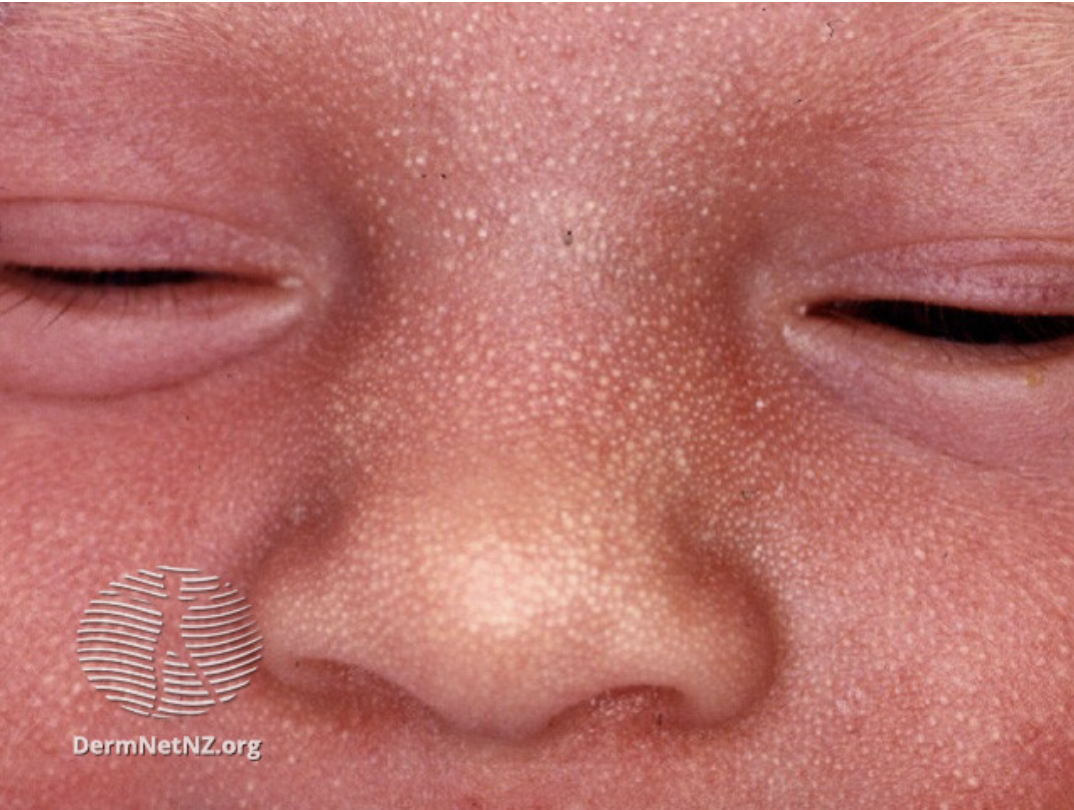Rashes in newborns - making sense of the dots and spots
DISCLAIMER: The following advice is of a general nature only. If you have a sick child or a child with an odd rash, they should be seen by your doctor. Sick baby AND a rash — definitely get them seen by a doctor.
They are so precious
So, which rashes to worry about and which are ok?
COMMON RASHES IN NEWBORNS THAT YOU DON’T NEED TO WORRY ABOUT IN A WELL CHILD
With thanks and acknowledgement to the wonderful work of DermNet NZ for the use of their images and for their generosity in sharing information under a Creative Commons Licence
Toxic erythema of the newborn
Common = up to 50% of full-term babies
Uncommon in premature babies
It comes out of nowhere in the first few days to weeks and looks like pimples on a red base or sometimes just pinky red marks or bumps
Can be all over but usually not on the palms and soles
It is not toxic, does not bother baby and goes away by itself within a couple of days
More information
Milia
Common = 40–50% of newborn babies
May be just a few dots or lots, like in this photo
Usually seen on the face, head, chest or upper back
Go by themselves within a few weeks
More information
Miliaria
Also known as heat rash or prickly heat
Common in warm climates = about 15%
Thought due to immature sweat ducts
Usually on the forehead, neck and upper body and areas under wraps
Happens in the first few weeks of life
It settles within a few days with cooling
More information
Sucking and suckling blisters
Suckling blisters, like the one in the photo, are caused by strong sucking when feeding and are on the upper lip
Sucking blisters are caused by vigorous sucking when baby is still in the womb and typically are on the forearm, wrist, hands or fingers. They go by themselves within a few days
Information from DermNet NZ
Neonatal acne
Also known as baby acne
Common = 20% of newborns, boys more than girls (5:1)
You will usually see pimples on the cheeks, chin, and forehead
It mostly comes on at two weeks, but up to six weeks after birth however occasionally, babies are born with it
It will go away by itself
This form of acne does not usually scar
More information
Infantile acne
Occurs after the newborn period, but may be soon after, so I’m putting it here
Typically develops in babies from six weeks to one year old
It usually is seen on cheeks, and sometimes the forehead and chin
It is more common in boys than girls (3:1)
In most children, it goes away within a few months
There may be whiteheads, blackheads, pimples and even cysts
When more severe, it may benefit from treatment
It may scar
More information







